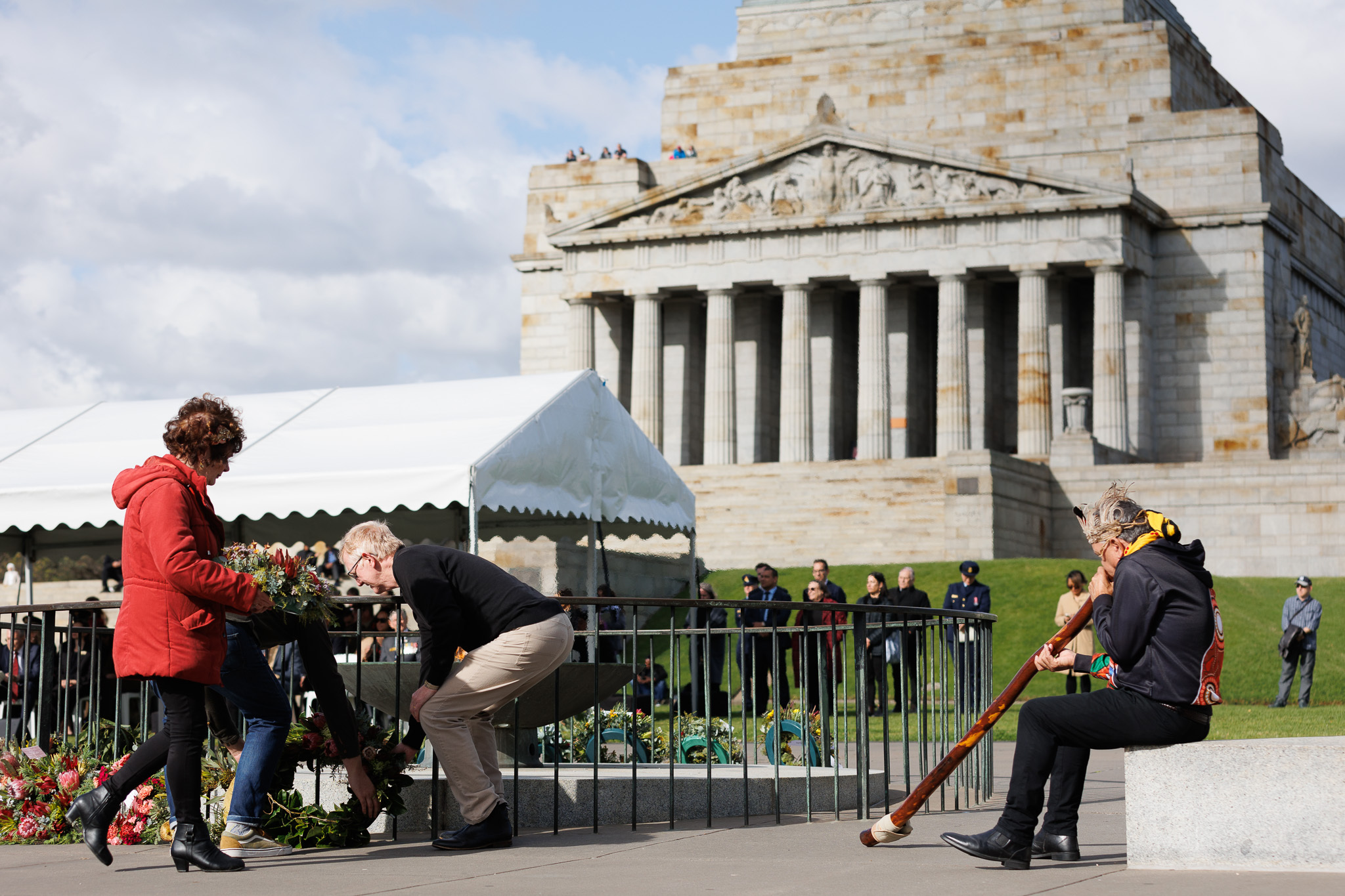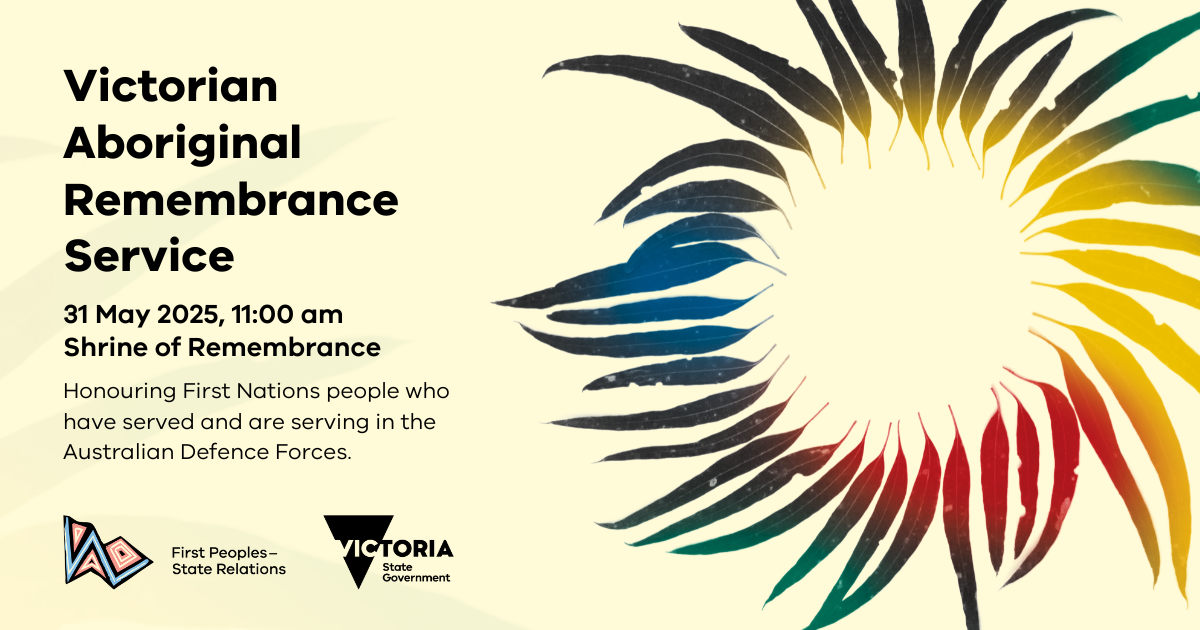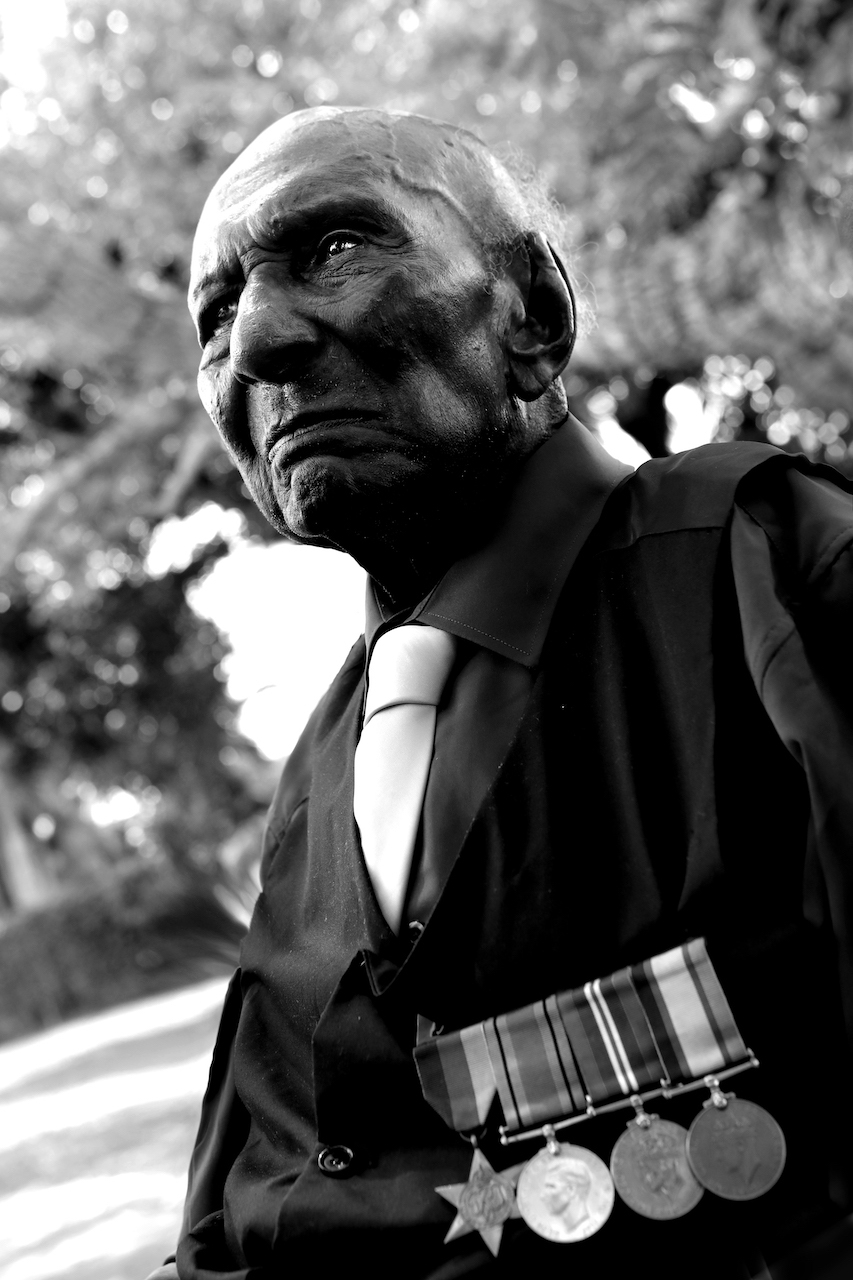ANZAC DAY 2025
Each ANZAC Day, we reflect on the service and sacrifice of members of the Australian Defence Force. At the Brotherhood of St. Laurence (BSL), we also acknowledge the vital role that Aboriginal and Torres Strait Islander people have played in every Australian conflict — often while facing systemic discrimination, exclusion, and injustice.
We are grateful to Cath Bradley, BSL’s Cultural Support Coordinator, for the following reflection. Cath works closely with Uncle John Baxter, BSL’s First Nations Cultural Ambassador, and together they continue to support our reconciliation journey with respect and cultural guidance.

Reflection from Cath Bradley
This ANZAC Day (Friday 25 April), we remember the service and sacrifice of members of the Australian Defence Force. We particularly acknowledge and celebrate Aboriginal and Torres Strait Islander veterans who served in every Australian conflict despite facing discrimination and exclusion from citizenship and the right to vote until after World War II (WWII).
Over 1,000 Aboriginal men from every state and territory served in World War I. The actual number would have been higher as many concealed their identity to enlist. Until late 1917 recruits to the Australian Defence Force had to be of European origin.
The racism and discrimination experienced by First Nations veterans included exclusion from pensions, soldier settlements and RSL venues. Aboriginal veterans from Coranderrk and Lake Tyers were not considered in the distribution of their own lands to white soldiers.
The Brotherhood of St. Laurence (BSL) is committed to acknowledging the injustices and discrimination experienced by Aboriginal and Torres Strait Islander peoples, including the historical injustices of First Nations veterans as part of our reconciliation efforts.
Remembering Australian First Nations servicemen and servicewomen
At this year’s Victorian Aboriginal Remembrance Service , to be held at the Shrine of Remembrance from 11am, Saturday 31 May, BSL will lay a wreath honouring all Aboriginal and Torres Strait Islander veterans.

Learn more and explore further
To deepen your understanding and honour the stories of Aboriginal and Torres Strait Islander veterans, we encourage you to explore the photos and personal stories in the ‘ Serving Country ’ photographic exhibition.
Serving Country: A Photographic Exhibition
The Serving Country exhibition acknowledges the contributions of Aboriginal and Torres Strait Islander service women and men in the Australian Defence Force.
Created by artists Belinda Mason and Dieter Knierim, the exhibition features more than 185 participants. From Cairns to Perth, Darwin to Melbourne, and many remote communities in between, it captures the stories of First Nations defence personnel.
Aboriginal and Torres Strait Islander diggers have served in every major conflict, often decades before they were granted full citizenship rights in the late 1960s.
Please note: This exhibition contains images and stories of Aboriginal and Torres Strait Islander people who have passed away.
